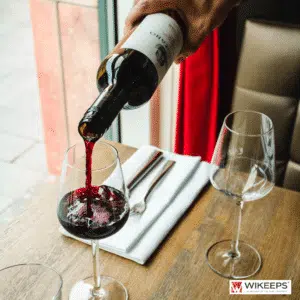A journey through the art of wine tastings
Enjoy a glass of wine, it’s nice (always in moderation, of course). But wine tastings bring an additional dimension! It reveals a range of more complex and enriching appreciations of wine.
Rest assured, this does not mean that a friendly moment around a bottle of wine, without detailed analysis, cannot be delectable. Can’t a music lover and a novice enjoy the same melody? Absolutely, but they probably won’t have the same perception.

Preparation for wine tastings
The art of wine tastings is acquired with time and experience, let’s explore its fundamentals together. A wine tasting involves several senses: sight, smell, taste and touch. Our natural predispositions make our perceptions different (for example, some people are more receptive to certain smells).
To initiate wine tastings, the environment must be adequate: well-lit to appreciate the color and reflections of the wine, free of parasitic odors so as not to divert our noses. In addition, it is recommended not to eat or smoke before a tasting so as not to alter the palate. Finally, make sure you have a suitable lens. You are now ready to eat!
Visual examination of wine
The first examination is purely visual, preferably on a white background. This involves evaluating the clarity of the wine, checking whether it is cloudy (with particles in suspension) or clear. Then comes the control of the dress, the color of the wine.
Olfactory tasting
We then move on to olfaction, the fragrance released by the wine. This examination is done in two stages: the first nose is the perfume of the wine just after having poured it into the glass, without stirring. If you perceive aromas, the wine is open. Otherwise, the wine is closed, it will have to be aired. The second nose can modify the perception of the wine: swirl the wine in the glass to aerate it. Normally, more aromas will be released and expressed.
The taste tasting
It’s finally time to move on to the actual tasting! Pay attention to your first impression on the palate: is the attack of the wine intense and frank or rather disappointing? Then, is the wine more acidic or mellow (sweet sensation)? Acidic wines provide a refreshing sensation.
For red wines, the astringent sensation (which can be unpleasant) should be monitored, it can betray a significant presence of tannins in young wines. However, these tannins, on older red wines, “melt” and give power and body to the wine.
Final analysis
Once the wine has been spat out (or swallowed, it depends on the tastings…), analyze the persistence of the aromas of the wine in the mouth, its length.
Extended tasting with Wikeeps
With Wikeeps preservation and serving systems, you can practice tasting up to 20 days after opening the bottle. To master the art of tasting, it is essential to practice regularly, which Wikeeps allows without blowing your budget.
